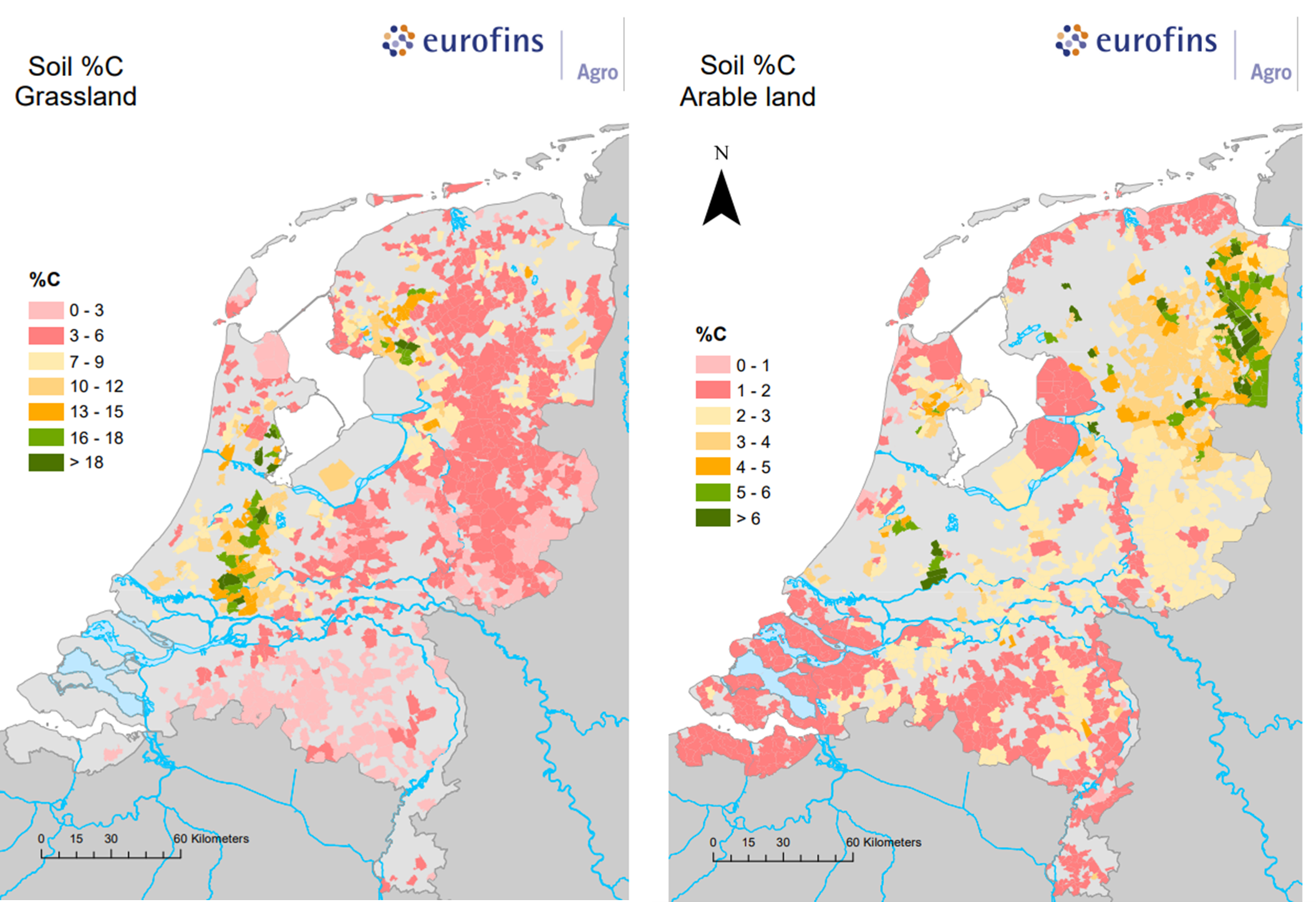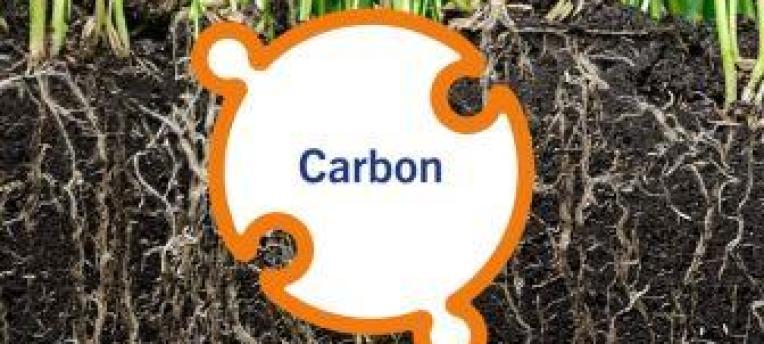Presence of carbon in Dutch agriculture
27 October 2023 - Soil Carbon Check
In 2015, 17 Sustainable Development Goals (SDGs) were approved, including SDG13, which addresses actions to increase carbon capture (CO2-C storage) for climate change mitigation. Soil Carbon Check is designed to measure the carbon present in soil. In this case study we researched the current status of soil organic carbon of agricultural land in the Netherlands.
Soil Carbon Check uses the analysis technique Near-Infrared Spectroscopy (NIRS). Eurofins Agro has a decade’s worth of experience in using NIRS to assess soil health. In this process, NIRS spectral data are coupled to reference methods for calibration and validation purposes. Details on the procedure for measuring soil organic carbon by NIRS can be found in Reijneveld et al., 2022.
Routine soil samples from arable and grassland fields in the Netherlands were analysed for soil organic carbon (SOC) content. Average levels for the whole country and per region (four-digit postal code) were calculated. In addition to calculating the averages for all samples, carbon levels in grassland soils (0-10 cm sample depth) were compared to arable soils (0-25 sample depth).
Grassland
The average SOC level in Dutch grasslands stands at 5.6% (Figure 1). There is a large range in SOC levels among grasslands across the whole country, from 2.7% (10th percentile) to 10.6% (90th percentile). Most of the lower SOC levels are found in the southeastern part of the Netherlands. Here, you will generally find light textured sandy soils, whereas higher SOC levels can be found in the old marine and peaty soils in the western region and partly also in the north of the country.
Arable land
Arable soils are sampled 0-25 cm deep. For arable soils, the highest SOC levels can be found in the northeastern parts of the Netherlands, where the land partly consists of reclaimed peat soils. Soil carbon levels in arable fields are on average 2.4%, ranging from 1.2% (10th percentile) to 4.3% (90th percentile).
Grassland vs. arable land
This case study showed that Dutch grasslands contain more SOC than arable soils. However, there is substantial overlap, as arable farmland on reclaimed peat soils in the northwestern part of the Netherlands have a higher carbon content than the grasslands on sandy soils in the southern part of the Netherlands.

Figure 1. Average soil carbon content per four-digit postal code regions for grassland soils (left, with n = 67 474) and arable soils (right, with n = 100 089). Be aware of the higher carbon levels with similar colours in the grassland soils as compared to arable soils.





